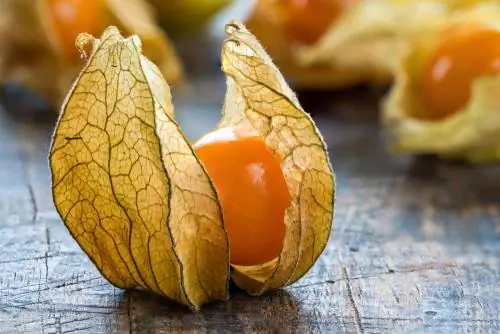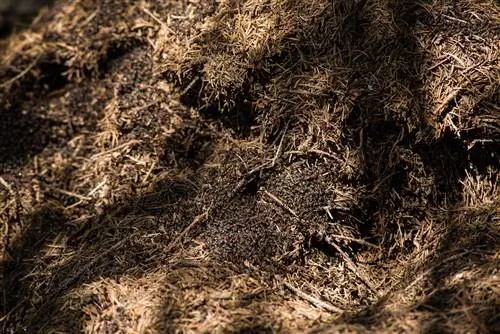- Author admin [email protected].
- Public 2023-12-16 16:46.
- Last modified 2025-01-23 11:20.
More and more people are no longer meeting their protein needs through animal foods, but rather through protein-rich plants. This is where the yellow lupine comes into play, which, like blue and white lupins, is increasingly being used as a substitute for soy.

What is yellow lupine used for?
The yellow lupine (Lupinus luteus) is a sweet lupine that is used as a protein-rich alternative to soy. It serves as the basis for lupine flour, lupine tofu, lupine coffee and animal feed. Despite the removal of toxins, some people may have an allergic reaction to sweet lupins.
The yellow lupine is a sweet lupine
The yellow lupine “Lupinus luteus” is not suitable for growing in the garden. Its flowers are less decorative than those of the lupine shrub for the garden.
Sweet lupins were bred so that they do not contain any toxic components and are therefore edible. However, the seeds of ornamental lupins must never be consumed as they are poisonous.
Yellow lupins, like white and blue lupins, are cultivated on a large scale to produce food, animal feed or seeds.
Using sweet lupins
The seeds are consumed. In the Mediterranean region, the grains are served pickled as a snack. They are also processed into various products:
- Lupine flour
- Lupine Tofu (Lopino)
- Lupine coffee
- Animal food
Lupine is now also often used instead of soy for many ready meals and types of ice cream. This is also due to the fact that products made from soy are increasingly being bought less due to genetic modifications.
Another advantage of using lupins as a source of protein is that, unlike soy, sweet lupins are tasteless and do not change the aroma of food and drinks.
Not everyone can tolerate sweet lupins
Sweet lupins are free of toxins, but not everyone can tolerate the plant. Allergies often occur after eating yellow lupine in the form of flour or as a ready meal.
Use as green manure
Sweet lupins are ideal green manure plants. White, yellow and blue lupins are therefore often grown in fields to improve the soil.
The long roots penetrate even compacted soil and loosen it up deeply. Bacteria living on the roots enrich the soil with nitrogen, which fertilizes it and allows plants with high nutrient requirements to be grown.
Tips & Tricks
The proportion of yellow lupine cultivation areas in Germany has fallen sharply in recent years. Since the appearance of the fungal disease “antracnose”, which mainly affects the light-colored varieties, agricultural businesses have increasingly relied on blue lupins.






